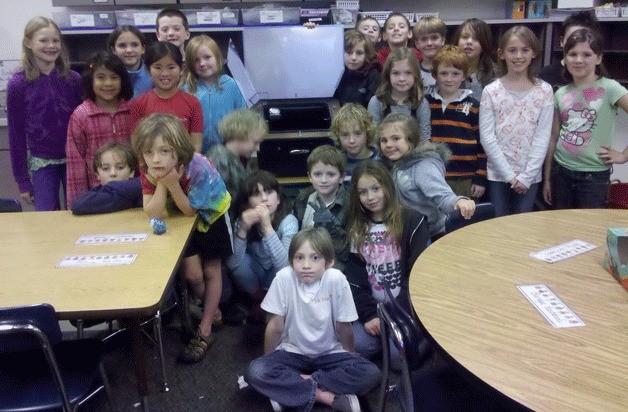Now they’re NOT cooking with gas.
Students in Kathy Stanley’s combined second- and third-grade class at South Whidbey Elementary School are learning about sustainability firsthand this school year.
Study involves science, art, literature, some brownie mix and a little oven in a box.
“I think it’s going to work, but we don’t no for sure,” one of the students printed in a journal chronicling the class’s first attempt to bake brownies using nothing but sunshine for energy.
“It took four hours!” wrote another student.
“They were sooooo good!” wrote a third.
Stanley purchased the solar oven with $450 awarded by the nonprofit South Whidbey Schools Foundation, which provides money for teacher-proposed projects that would benefit South Whidbey students but are beyond the school’s budget.
Some of the money also was provided by Puget Sound Energy.
The oven itself looks like a cabinet drawer with four highly polished flaps on top that unfold like a flower blossom to coax in the rays.
The reflective aluminum panels concentrate the sun to heat a compartment for cooking without the need for electricity or gas.
“As the class learned, similar ovens are often used in disaster relief efforts and in impoverished areas of the world where fuel for heating is either scarce or dangerous to use,” said Chris Gibson, a foundation board member.
The class first tried out the oven on an overcast day in February, attempting to bake a pan of gluten-free brownies.
Cooking instructions called for a temperature of 350 degrees, but the oven could only squeeze 300 degrees from the winterized atmosphere. No worries — the students just cooked the brownies longer.
On a sunny Wednesday this past week, the students tried again with chocolate chip bars, with a more efficient result.
“The journal entries show they were a different experience from the brownie try in early February,” Stanley said.
In their journals, the students also noted other forms of sustainability they’ve learned about this year, including the study of rotting garbage and how it contributes to composting.
They also have learned about recycling and other strategies to reduce waste.
Lisa Bjork of Greenbank, president of the foundation, said Stanley’s grant was one of several that totaled nearly $10,000 this year to teacher projects at all grade levels in the district.
The South Whidbey Schools Foundation was formed in 1994 to help fill gaps in the South End public school programs.
The foundation provides grants each year for individual school projects not covered by school-district funds, an ever-dwindling account. In the past, the foundation has funded the high school’s competitive solar-car program, and classroom equipment for shop, arts and music projects.
It also serves as a pass-through agency for people in the community donating money to keep programs going, such as the school jazz bands.
This past year the foundation distributed about $23,000 in chunks of about $1,000 or less.
Bjork said the foundation has continued to receive donations despite the poor economy, “but we could use a lot more.”
“This is a tough time for schools,” she added.
As for the Great Brownie Experiment, Bjork said: “The combination of teaching children science and environmental sustainability through the use of an outdoor oven provides for creative and incredibly powerful learning.”
Meanwhile, Bjork said the foundation’s annual fundraising gala will be Saturday, May 21, at Useless Bay Golf & Country Club.
For information about the foundation, visit www.southwhidbeyschoolsfoundation.org.



